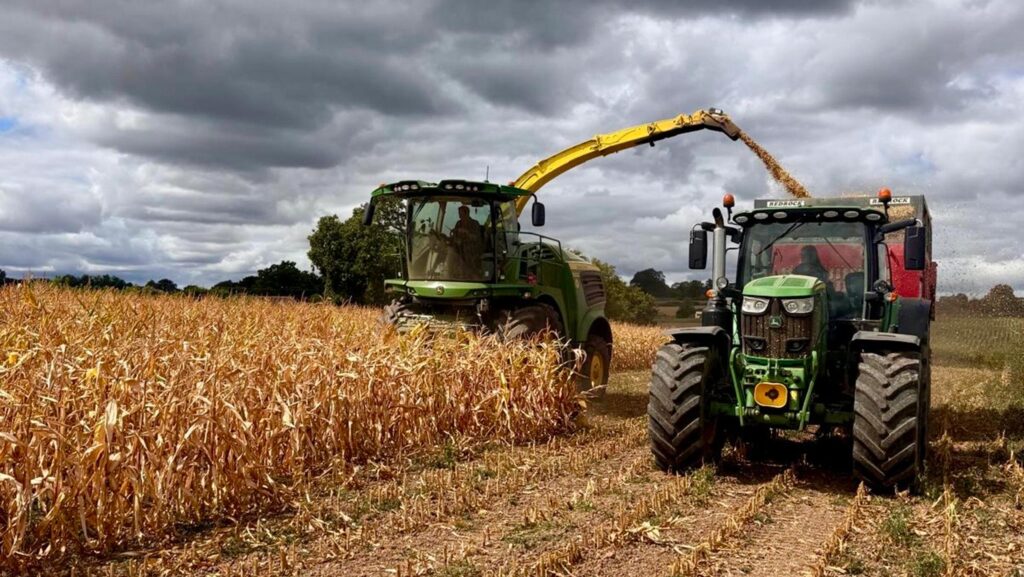Maize harvest off to very early start in Somerset
 © Rodney Down
© Rodney Down Maize harvest got off to an exceptionally early start in Somerset this week, with mixed farmer Rodney Down taking a crop of Temprano maize that had died off, but was still fit for animal feed.
Mr Down says he has only ever cut maize in August once before, but this year he got the forager out on 12 August – some 19 days earlier than his previous earliest harvest.
See also: Worsening drought situation triggers fodder fears
“We could have harvested it two weeks ago – it’s just died off and the cobs are all fit,” he says.
“We finished combining cereals and one day later went into the maize.”
The Temprano was drilled early on 15 April at Meare Green Farm, North Curry, Somerset, in an area that was hit hard by the drought.
The first 60ha cut yielded 20-25t/ha – about 50% down on last year – and came off at 50% dry matter.
“But the cobs are 75% of their normal size – they’re fully formed and completely fit.”
Mr Down has 283ha of mostly Temprano left to cut.
Although it was drilled at a similar time, it is on heavier land that benefited from more rain, so will be another 10 days before it’s fit.
“It looks like it will be average or slightly better,” he said.
Mixed picture
This mixed picture is somewhat typical of the country as a whole, according to John Morgan, consultant to the Maize Growers’ Association.
“A lot of crops were drilled much earlier this year, which was then followed by a warm, sunny growing season,” he said.
“They have progressed well, clocking up enough ‘heat units’ to ensure good growth.
“Here in Devon, I expect the maize harvest will start properly next week.
“We will see a lot cut in August, whereas last year there was almost none.”
But elsewhere in the country, where it has been very dry and crops were drilled late, maize crops have struggled and some are dying off, said Mr Morgan.
These crops will likely be taken sooner rather than later – “growers will be cutting their losses” – and yields and quality will not be good.
Pressure
On Mr Down’s farm, pressure on feed stocks is mounting.
“We’ve already sold 150 head to destock the farm,” he said.
“We are eating into our winter forage stocks, have bought in extra, and are feeding straw.
“We’re now looking at moist feeds. But the cows are looking well.”
With 1,000 dairy cows across three sites, as well as beef cattle, Mr Down is already changing his plans for next year.
“We’re planting a lot of wheat for wholecrop as we know we’re going to run out of forage next summer.”

